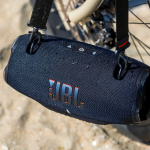- A good sprinkler can save money, protect natural resources, and provide optimal gardening results.
- We looked at durability, water distribution, ease of use, and price while testing.
- We rounded up sprinklers best for small and large lawns alike, as well as an option for seedlings.
Every gardener, including those without a green thumb, needs the right tools and knows that plants need water to survive. That’s why it’s important to understand the watering requirements of different plants, your local climate and soil, and how to properly add supplemental water.
If you don’t have an automatic irrigation system installed, and don’t have time to water every area of your garden with a hose or watering can, you’ll need a sprinkler to help distribute water in your garden. But watering seedlings, hanging plants, and your entire yard each need a different delivery system and pressure, so we’ve provided a variety of options depending on what type of plants you’re caring for.
We tested sprinklers for durability, water distribution, ease of use, and, of course, price.
Here are the best sprinklers of 2021
- Best for large lawns: Nelson RainTrain Traveling Sprinkler
- Best for small lawns: Melnor XT Metal Turbo Oscillating Sprinkler with Flow Control
- Best shelf sprinkler for flowers and vegetables: Gardena Spray Spike Sprinkler
- Best soaker hose: Gilmour Flat Soaker Hose
- Best on a budget: Melnor XT 4000 Oscillating Sprinkler
Ace Hardware
The Nelson RainTrain Traveling Sprinkler moves along a garden hose up to 200 feet so you don’t have to shift the sprinkler when watering large areas.
Pros: Covers large lawns, don’t have to move the sprinkler, automatic shut-off to prevent water waste, full-circle spray pattern
Cons: Learning curve for first use, not suitable for heavily planted or highly sloped natural areas
When you need to provide water to a large, open expanse, the Nelson RainTrain Traveling Sprinkler is your best bet, as it can cover up to 13,500 square feet quickly and efficiently.
Nelson’s sprinkler comes with three speeds to adjust saturation levels: high, for faster traveling with less spray; neutral, for targeting a specific area with the sprinkler set to one place; and low, for slower traveling with more spray.
After selecting your preferred speed, you can adjust the spray arms to cover between 15 to 55 feet in diameter. And, it works for large and small yards alike, since moving the arms downward will focus on a narrow area, while turning them upward at a 30-degree angle will maximize coverage.
The Nelson moves along a garden hose path up to 200 feet, so you don’t have to move the full-circle sprinkler on your wide plot, and it will automatically shut off after its cycle to prevent water waste. Lawn maintenance will be even more hassle-free if you use a ⅝-inch hose because a smaller one can cause the sprinkler to go off its track.
After several seasons of use, I am still impressed with the high-grade materials and durability. There’s a bit of a learning curve, however, to make sure the sprinkler runs at the speed you desire and to properly set up the hose path.
The best sprinkler for small lawns
Walmart
The Melnor XT Metal Turbo Oscillating Sprinkler with Flow Control is precise and perfect for watering small areas.
Pros: Adjustable width, range, and flow of water pattern
Cons: Must be moved frequently to cover large areas of lawn
The Melnor XT Metal Turbo Oscillating Sprinkler with Flow Control is durable, customizable, and precisely-designed for small spaces. It features controls to adjust the width, range, and flow of the watering pattern, which came in handy when I wanted to pinpoint specific areas — like a newly-planted bed — that required watering.
You can choose from 20 different nozzles that cover up to 4,500 square feet. You can also remove the metal filter to be cleaned for efficient maintenance. The end plug even doubles as a cleaning tool for the nozzles.
I’m impressed with Melnor‘s smooth movements and its adaptability — particularly how it doesn’t shoot water too high into the air, which tends to evaporate the water before it hits the ground. Though you have to move the sprinkler from area to area, its precise power makes it one of our top picks.
The best sprinkler for flowers and vegetables
Amazon
For newly seeded areas or tender young plants, the Gardena Spray Spike Sprinkler delivers the water they need without harming their growth.
Pros: Simple to install, delivers water in a fine mist spray, adjustable for coverage area
Cons: Hose connector may break if not handled carefully
Whether I direct-sow into the soil or start seeds indoors, the water freshly planted seeds need must be delivered gently or they will wash away or drown. That’s why I love the Gardena Spray Spike Sprinkler, which delivers moisture in a fine-mist spray that slowly soaks into the soil to protect your hard work outside.
The mist is delivered in a circular pattern that can reach a diameter of up to 10 yards and cover up to 1,000 square feet. However, by reducing the water pressure, the diameter can be adjusted to cover much smaller areas.
Though the plastic hose connector may break if not carefully handled, its set-in-place installation makes it perfect for novice gardeners who want full blooms and ripe harvests.
The best soaker hose
Amazon
Gilmour’s Flat Soaker Hose will effectively transport much-needed water to the root systems of mature trees, shrubs, and plants.
Pros: Available in several lengths, connectable, flow rate is adjusted at the water faucet
Cons: May need landscaping staples to hold the hose in place
If you’re tired of dragging a hose and sprinkler around the yard but don’t want a built-in sprinkler system, you need the Gilmour Flat Soaker Hose. It winds underneath the mulch to gently provide the moisture plants need without losing water to evaporation, which also conserves water.
Since the water is going directly to the root balls, there is less danger of mildew and other foliage diseases caused by excessive moisture. Weed control is also easier because there’s less surface water to sprout unwanted seeds. And, it saves time because I don’t have to reposition sprinklers.
The hose — which is lightweight and also comes in a 25′ option — has a clog-resistant fabric cover that promotes easy water flow. The hose is easy to place and mold around the base of plants to deliver water right where you want it, and you can join additional hoses, if needed, to cover the entire area.
Though you may need landscaping staples to hold the hose in place, its fabric cover also makes it more durable than other brands. Each late autumn, I flush it out and bring it inside for storage and it’s lasted me for more than five years.
The best budget sprinkler
The Home Depot
If you’re working with a tight budget to complete other outdoor projects, the Melnor XT 4000 Oscillating Sprinkler will affordably water your lawn in the warmer months.
Pros: Budget-friendly, covers 4,000-square-feet, adjustable coverage settings, turbo-drive motor, built-in cleaner
Cons: Plastic components can break more easily
Melnor is a leading name in garden sprinklers, and the brand’s Melnor XT 4000 Oscillating Sprinkler lives up to its name and is budget-friendly. Covering 3,700-square feet, the oscillating sprinkler has 18 nozzles —six of which have a positive shutoff —and adjustable settings for width and range. There’s also a built-in cleaning tool to prevent debris buildup and help the water flow.
Though the plastic components can break more easily than more expensive all-metal sprinklers, the turbo-drive motor is durable enough to last you from season to season. Just be sure to move it out of direct sunlight when not in use to help prolong its life.
What to know if you’re a first-time gardener or landscaper
If you’re looking to learn more about landscaping and the needs of your local flora, one of the best places to start is your local county extension office — and it’s free. As a farmer’s daughter, I worked with horticulture specialists and county agents at Clemson University Extension who advised me to spend some time observing these four things before sprinkling water everywhere:
- Plant variety in the garden: Trees, shrubs, lawn grasses, annuals, and perennials all have different water needs. If you are just getting started, try to group plants with similar water needs together.
- Climate and annual rainfall: Windy, dry climates are very different from cloudy, humid areas and require different water levels and methods of delivery to get the most moisture to the plant’s root system.
- Soil type: Get to know your dirt. Clay soil is heavy and water is absorbed slowly so you need to water at a slow rate. Water passes through sandy soil quickly and plants need to be watered more often. Loam soil, a combination of sand, clay, and organic matter, distributes water evenly and is the easiest to manage.
- Size and slope of the garden: Sprinkler choices will depend upon the terrain and the size of the area that needs watering.
Check out our other lawn care guides
The 5 best lawn mowers
The 5 best electric lawn mowers
The 5 best riding lawn mowers
The 4 best garden hoses
The best garden hose nozzles
The best gardening and landscaping tools
The best gardening gloves
The best gardening shovels
Powered by WPeMatico






